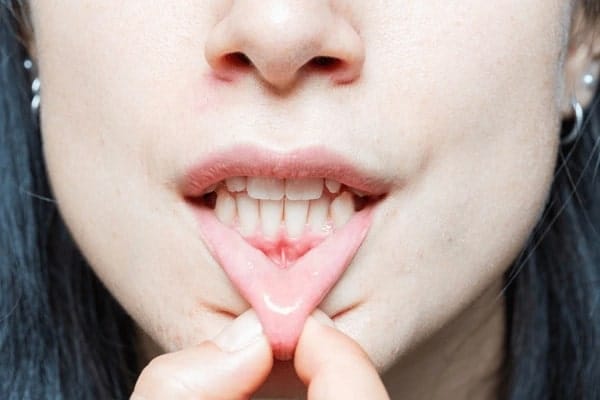Gum recession can sneak up quietly, often without pain, and yet it can have significant implications for long-term oral health. Many people only notice receding gums when sensitivity kicks in or teeth start to appear longer than usual. The question on many minds is simple but important — is it possible to reverse gum recession, and what options exist to support gum health?
Let’s explore the facts behind gum recession, the contributing factors, and the range of strategies that may help in managing it effectively.
What Causes Gums to Recede in the First Place?
Gum tissue plays a vital role in protecting the tooth roots and underlying bone. When this tissue gradually pulls away, exposing the root surface, it’s known as gum recession. There are several common contributors:
- Brushing too hard or using a hard-bristled toothbrush
- Inadequate or inconsistent oral hygiene
- Periodontal (gum) disease
- Misaligned bite or crowded teeth
- Clenching and grinding (bruxism)
- Tobacco use
- Genetics and ageing
Understanding the root causes is key to identifying preventive steps and potential professional interventions.
Can Daily Habits Help Manage Gum Recession?
While gum tissue does not typically regenerate once lost, modifying your daily routine can go a long way in slowing progression and supporting overall gum health.
Here are key oral hygiene habits that can make a difference:
- Brush twice daily with a soft-bristled toothbrush using gentle, circular motions
- Use fluoride toothpaste as recommended by your professional dentist
- Floss daily using a technique that avoids trauma to gum tissue
- Avoid aggressive scrubbing or saw-like motions
- Replace toothbrushes regularly to avoid worn bristles
- Avoid smoking or chewing tobacco
Maintaining these habits can help reduce oral inflammation, prevent plaque accumulation, and protect delicate soft tissue.
What Professional Care Options Are Available?
In cases where gum recession has already occurred, a range of professional dental interventions may be discussed based on the individual situation.
Options may include:
- Professional Cleaning: Removal of plaque and tartar that brushing alone cannot address
- Scaling and Root Planning: A non-surgical deep clean beneath the gumline
- Periodontal Therapy: Tailored management plans that support gingival health
- Bite Adjustment or Splints: For those with grinding or jaw alignment issues
- Gum Grafting Procedures: In some cases, transferring tissue to cover exposed roots
Treatment suitability varies from patient to patient. All procedures should be discussed with a dental practitioner, who will assess the risks, alternatives, and expected outcomes.
How Does Gum Recession Impact Teeth Over Time?
Exposed roots from receding gums can lead to various issues, including:
- Increased tooth sensitivity
- Higher risk of root decay
- Aesthetic concerns (longer-looking teeth)
- Possible tooth loosening over time (in advanced cases)
That’s why timely evaluation is so important — to assess what interventions are appropriate and to establish an oral care plan that maintains long-term health.
What Lifestyle Factors Can Improve Gum Health?
Lifestyle choices can either support or compromise your gum health. Beyond oral hygiene, consider the following:
- Balanced diet: Nutrient-rich foods help support gum tissue
- Regular hydration: Keeps saliva flowing and helps neutralise acid
- Limiting sugary snacks and beverages
- Avoiding tobacco products: Known to exacerbate gum problems
- Mouthguards: Protect against bruxism-related gum damage
Which Signs Indicate You Should See a Dental Professional?
While occasional sensitivity may seem manageable, it’s important to consult a dental professional if you notice:
- Gums pulling away from teeth
- Sudden or ongoing sensitivity to hot or cold
- Teeth appearing longer than before
- Redness, swelling, or bleeding when brushing
- Persistent bad breath
- Loose-feeling teeth
An early assessment can help manage risks before they progress further.
Can You See Gum Recession Coming?
Prevention starts with awareness. Many people don’t realise gum recession is developing until it’s progressed significantly. Dental professionals may detect early warning signs during routine dental check-up — which is why those visits matter.
Even without visible signs, underlying inflammation or plaque beneath the gums can contribute to tissue breakdown. If you’ve missed a few check-ups, it’s a good time to book one in.
What Are the Main Ways to Support Gum Health?
Below is a table summarising key approaches to preserving gum health and managing recession:
| Focus Area | Strategy |
|---|---|
| Oral Hygiene | Gentle brushing, daily flossing, professional cleaning |
| Dietary Choices | Reduce sugar, increase vitamin-rich foods, stay hydrated |
| Lifestyle Adjustments | Avoid smoking, manage stress, address clenching or grinding |
| Professional Interventions | Periodontal assessments, scaling and root planing, splinting if needed |
| Surgical Considerations | In specific cases, tissue grafts may be discussed based on clinical assessment |
| Routine Monitoring | Regular dental reviews to track gum health and detect early changes |
Why Choose Palm Beach Dental for Personalised Gum Care?
If you’re seeking thoughtful, professional guidance for your gum health, Palm Beach Dental stands ready to help. Our team takes a patient-first approach, offering factual, individualised information without pressure or promises. We understand that every patient’s needs are unique — especially when it comes to managing sensitive gum tissue or early signs of recession.
With modern facilities and a calm, supportive environment, Palm Beach Dental focuses on helping patients make informed choices about their oral health. Whether you’re experiencing tooth sensitivity or simply want to better protect your smile, we welcome you to book a consultation and speak with our caring team.
Important FAQ’s
Q1. Can receding gums grow back naturally?
No. Once gum tissue has receded, it typically does not grow back. However, steps can be taken to prevent further loss and maintain existing gum health.
Q2. What toothbrush is best if I have gum recession?
Use a soft-bristled toothbrush with gentle pressure. Electric toothbrushes with pressure sensors can also help prevent over-brushing.
Q3. Does gum recession mean I have gum disease?
Not always. Gum recession can result from multiple causes, including brushing technique or bite misalignment. A dental check-up will help determine the underlying reason.
Q4. Can I still whiten my teeth if I have gum recession?
Tooth whitening may not be suitable for all patients with exposed roots or sensitive teeth. A dental professional can provide personalised advice based on your condition.
Q5. Are deep cleanings painful for receding gums?
Deep cleaning procedures are performed with care and often involve local anaesthesia. Aftercare instructions will help manage any post-treatment sensitivity.
Q6. How often should I see a dentist if I have gum recession?
Frequency depends on your individual condition, but dental professionals may recommend visits every 3–6 months for monitoring and maintenance.
Research and Reference Links
Below are reliable Australian-based references that support the content presented in this article:
- Australian Dental Association – Periodontal Disease: https://www.ada.org.au/Dental-Health-Week/Oral-Health-Facts/Gum-disease
- Better Health Victoria – Receding Gums: https://www.betterhealth.vic.gov.au/health/conditionsandtreatments/gum-disease
- Healthdirect Australia – Gum Disease Overview: https://www.healthdirect.gov.au/gum-disease
- Australian Government Department of Health – Oral Health: https://www.health.gov.au/topics/oral-health
Disclaimer
All dental procedures involve potential risks and benefits. The information provided in this blog is general in nature and should not be taken as medical advice. We recommend that you seek guidance from a suitably qualified health professional before making decisions about your oral health. Where appropriate, you may also wish to consider obtaining a second opinion.
Any images or videos featured are shared with the informed consent of our patients and are intended for educational purposes only. They are not a guarantee of results, as every patient is unique. Treatment outcomes — including recovery, potential complications, and effectiveness — can vary from person to person.



